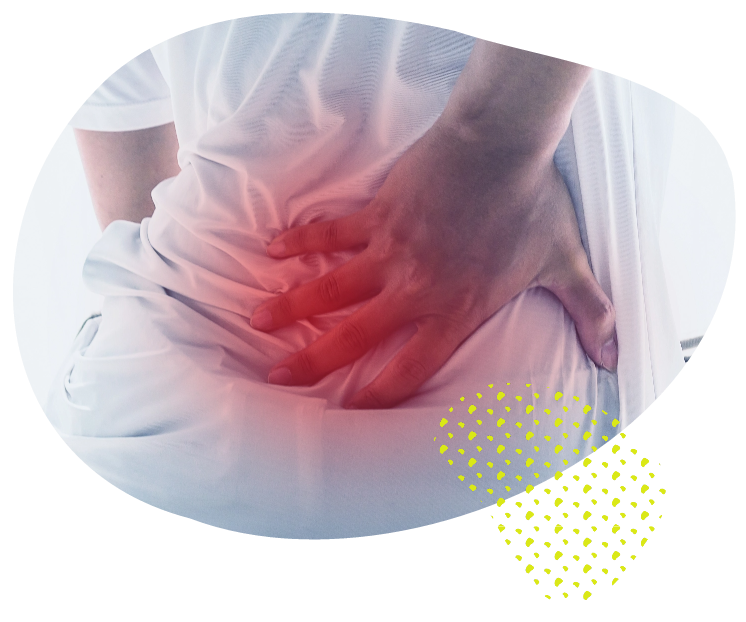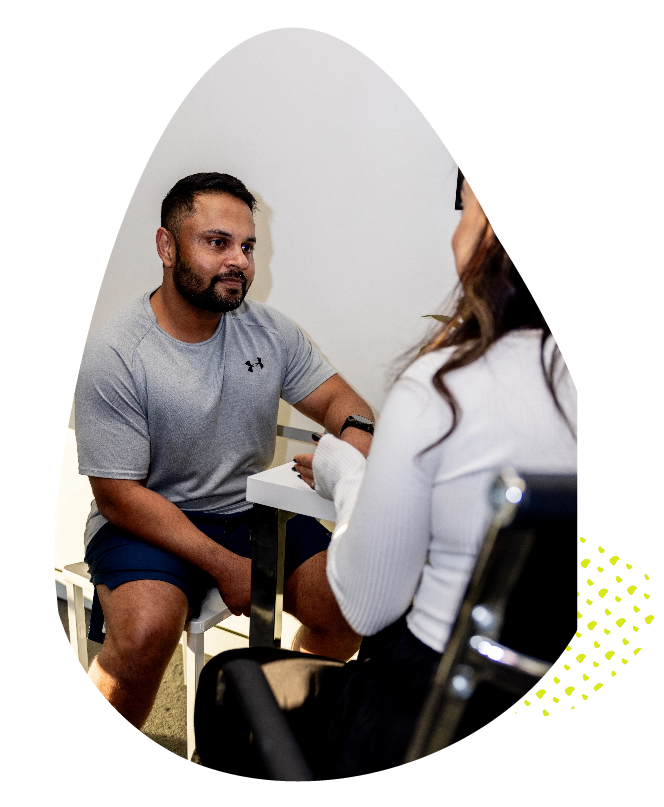Lower Back Pain


Cause and Risk Factors
Age: 30-50yr old’s have an increased risk of developing due to a loss of bone strength
Less physically active: weak back, lower body and abdominal muscles
Obesity: stresses the lower spine
Genetics: spondylitis
Occupation: desk workers have an increased risk due to poor posture with insufficient back support. Jobs which require heavy lifting, pushing and pulling can place undue stress on the spine
Smoking: reduces blood flow and oxygen to the discs in our back causing them to deteriorate faster
Uneducated training: lifting heavy loads with poor form
Prolonged standing: poor posture
How can Bites Dietitians help?
Next we will take you through some basic movement patterns so we can assess your form as this can help identify how your body is moving and formulate a treatment plan accordingly. Our main focus at Bites is educating and retraining your movements so the body moves more efficiently as well as making you more aware of your daily movement/activities. All this information will allow us to formulate the best exercise plan for you possible, targeting the areas which need most work to address the pain. Generally, we will work on core and whole body strength and activation as this will increase the strength of the muscles surrounding the lumbar spine resulting in more support and less stress on the structures of the spine like the discs and vertebrae. We will also likely ask you about where you are feeling symptoms and details about their onset to get a better picture of some of activities that may be adding to or triggering your pain.
It’s very helpful for us to have a clear understanding of your pathology from either reports or scans so that we can understand how best to help you. We may also address the upper leg range of motion especially the ‘hip flexors’ as when these muscles are tight and stiff this can place additional stress onto the lumbar spine through an increase in shear and compressive force. Aerobic exercise can also be quite beneficial for lower back pain as it can increase the blood flow and nutrients flowing to the soft tissues surrounding the spine increasing the healing and reducing stiffness which may be causing the pain.
We want to help reduce your pain using a plan which is enjoyable but functional and tailored to you! So if you’re ready to get moving and push that pesky pain aside to live a happier healthy life, contact us to book an appointment!

Interesting facts about lower back pain and exercise
- non-training control group
- Flexibility of the lumbar spine and hamstrings has been shown to significantly decrease chronic lower back pain
- Aerobic exercise increases the blood flow to the soft tissues surrounding the lower back which can help to heal damage which can be causing the pain
- Education, core activation and range of motion of the hip flexors are the most important components in combating lower back pain
Improvements to expect from a tailored exercise program
- Reduction in pain
- Improvements in mood
- Increased fitness and strength
- Reduced recurrent low back pain “episodes” through better physical conditioning
- Improved movement and range of motion
- Decrease in risks of chronic conditions

Helpful things to bring/remember before your first appointment
- Referral from GP or specialist (if you have)
- Any medical scans and reports i.e. MRI, X-rays, CT
- List of current medications and dosages
- Any recent blood test results
- Positive attitude to get moving
Want To Know More About Other Conditions We Treat?
